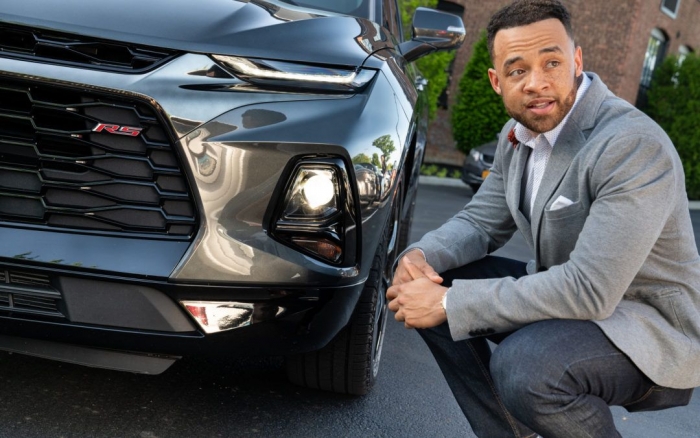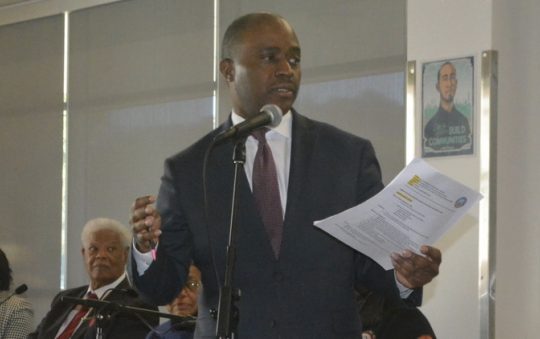
At 28-years-old, Charles Muse is already a significant player at General Motors.
Muse, who serves on GM’s Program Engineering Management Team for Autonomous Vehicles, certainly counts as a prodigy. A graduate of Ohio State University Aerospace Engineering, Muse already has more than eight years of automotive industry experience. !
His professional background includes roles as a Lead Aerodynamicist, Chassis Senior Design Release Engineer, and Engineering Operations Supervisor. !
A native of Chicago’s Southside, Muse is licensed as a private pilot.
In 2019, he mentored young aspiring journalists in Chevrolet’s Discover the Unexpected Program, in partnership with the National Newspaper Publishers Association.
So, how does a 28-year-old quickly climb the ladder at America’s premier automotive company?
Muse explains to NNPA Newswire in his own words:
“I’d always kind of been infatuated with cars and engineering, and I’ve been taking cars apart since I was younger. That led me to high school, where I started to take engineering and aviation courses as well as flight training at a local airport. When I got to college, I studied Aeronautical and Astronautical engineering. And from there, I ended up landing an internship with General Motors.
“I had many engineering assignments as an intern including Aerodynamics and Aeroacoustics in my last rotation and lo and behold, I got a full time offer as an aerodynamicist. As an Aerospace Engineering graduate, you typically end up in the aerospace industry like Lockheed Martin or Boeing, but I was able to land a dream job in both of my passions at General Motors starting out as the lead aerodynamicist for crossovers.
“I was the lead aerodynamicist for the Chevy Blazer and what that basically means is designing the vehicle to be aerodynamic.
“Aerodynamics, at a high level, can be experienced driving down the highway and putting your hand out the window and you can kind of feel the air push your hand back depending on how you turn it.
“You turn your hand perpendicular to ground and the air blows your hand back so that effectively your hand is experiencing aerodynamic drag.
“And if you turn it parallel to ground, it’s a lot smoother. My job was executing that “smooth” air flow, essentially low aerodynamic drag values/performance for the vehicle, and that’s a big part of what makes the Chevy Blazer efficient.
“My role as the lead aerodynamicist was developing the vehicle through wind tunnel test and CFD analysis. Designing different panels and modifying the design to make the car perform at a high aerodynamic level to meet strict fuel economy requirements while delivering an iconic design to the customer.
“I executed the engineering and design of many vehicles, the Chevy Blazer, Chevy Traverse, and GMC Acadia to name a few. And it was inherent to my passion. Within these roles, you interact with a lot of engineering leaders at GM; one of which is the chief engineer, someone owns the entire vehicle. They need to understand all requirements including safety, performance, manufacturing, financial, as well as customer requirements.
“At the end of the day, all decisions, whether it be from a design aspect or an aerodynamics aspect, it all goes to the chief engineer and they are responsible for the success of that vehicle, and that really intrigued me.
“As the aerodynamicist, when I wanted to make changes to the surface against the theme given from the design studio, I end up in meetings with the chief engineer to hash out what direction we want to take.
“The chief was assuming the risk and helping us make that decision. But I was really just intrigued with how articulate and intelligent chief engineers were when it comes to speaking about the entire vehicle.
“Every performance aspect, zero to 60 times, energy, design, manufacturing costs, they know everything about the car, and I just really wanted to know how they got to that level?
“And they took me under their wing and showed me that they needed to hold different positions within the company to understand how it all works.
“So, from aerodynamicist, I got selected to do a special assignment which sourcing a temporary wind tunnel facility during the upgrade of the GM facility, so they asked me to lead the project of identifying, sourcing, and creating the framework of a temporary offsite facility.
“So, we ended up at Lockheed Martin’s low speed wind tunnel in Atlanta, Georgia, and struck a deal where we upgraded their wind tunnel facility enabling them to charge more per hour and in exchange, we were awarded dedicated use of their facility for about a year and a half at a lower rate, a good business decision and I got to hire team of technicians, engineers, and sculptors, and we got all the arrow testing down there.
“I returned from this assignment as a senior design engineer in chassis working on air induction systems for full size trucks. Taking my background in chassis and engineering and exposing me to the system management team side of the business. Now I am in the total vehicle business working on the program engineering management team for autonomous vehicles.”









